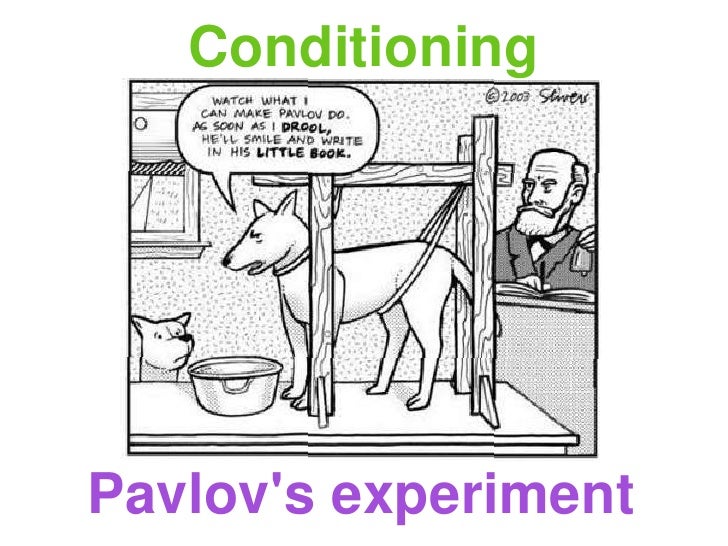
/puppy-dinner-time-174535929-58adc63d3df78c345bdd0c27.jpg)
Studies of aging effects on fear conditioning have been reported, but the results are not consistent. Fear conditioning, in which a neutral CS is paired with a moderately painful US, is another promising model system that has been elaborated extensively on a behavioral and neurobiological level. Eyeblink classical conditioning is a common paradigm for investigations of classical conditioning in general and classical conditioning in normal aging in particular. Skeletal muscle innervated by the cranial nerves controls the eyeblink. Whereas Ivan Pavlov discovered the phenomenon of classical conditioning using a conditioned reflex in the autonomic nervous system, the conditioned reflexes used in contemporary studies of classical conditioning, such as the conditioned eyeblink response, are controlled in the central nervous system. Woodruff-Pak, in Encyclopedia of Neuroscience, 2009 Classical Conditioning of the Eyeblink Response Similarly, the commands sent by each motoneuron to the muscle fibers under its control, as well as the signaling between one group of neurons and another, are based on all-or-none action potentials coursing along individual nerve fibers ( Adrian, 1947b).ĭ.S. Whether a sensation is tactile, auditory, visual, or other, depends on the sensory organ and the cortical area receiving the signals, not on the nature of the single signals, which are by themselves unvarying across sensory systems ( Adrian, 1947a). By recording the electrical activity of single nerve fibers, he proved that the messages conveyed to the brain in each fiber from all sensory organs are trains of electrical impulses varying in frequency, but not in amplitude, with the intensity of the stimulus. As detailed in a following section, Adrian's work has furnished the most important roots to the development of electroencephalography and electromyography, two major tools for investigation in both neurophysiology and clinical neurology, which eventually became the springboard for the take-off of clinical neurophysiology. Unlike Pavlov, Edgar Douglas Adrian also chose the neuron as his analytical unit, though with a different means from Sherrington's ( Adrian, 1935). Yet his influence on neuroscience was not as great as that of Sherrington because he did not attempt to reduce his hypothetical mechanisms of the conditioned reflexes, such as, for example, cortical inhibition, to the neuronal level ( Granit, 1982). Ivan Pavlov, the first neurophysiologist to be awarded a Nobel prize (in 1904, though for his work on the digestive system), is rightly regarded as a giant of physiology belonging in the same class as Sherrington.
PAVLOV EXPERIMENT CODE
Giovanni Berlucchi, in Handbook of Clinical Neurology, 2009 Adrian and the single-neuron code Later, a therapeutic method called exposure is described, which applies this theory. By presenting the CS repeatedly in the absence of the UCS, the theory posits that the CR will be extinguished. The theory also suggests a mechanism for intervention. As such, the theory helps to explain why some psychological problems, particularly anxiety disorders, may develop. In this experiment, Albert's fear of the white rat generalized to other objects such as rabbits, fur coats, and a Santa mask.Ĭlassical conditioning represents a pathway for learning behavioral responses to a variety of stimuli. Albert's fear in the face of the rat represents the conditioned response.


After this pairing was repeated, Albert cried and attempted to escape when the rat was presented without the sound. A white rat (CS) was placed in front of a toddler and as he reached for it, the experimenters struck a steel bar behind him with a hammer producing a loud sound (the UCS). Over numerous repetitions, the sounds alone elicited salivation (i.e., the CR).Ī classic example demonstrating the classical conditioning paradigm is the ‘Little Albert’ experiment conducted by John B. Again, in Pavlov's example, sounds were used as a CS, played before presenting the food (i.e., the UCS). When this happens, the response is referred to as the conditioned response (CR). When a conditioned stimulus (CS) is paired with the UCS, the CS will eventually elicit the UCR. In Pavlov's case, food (the UCS) led to a dog salivating (the UCR). The connection between the UCS and the UCR is innate and thus is not learned. The unconditioned stimulus (UCS) leads to the unconditioned response (UCR). There are four key terms: (a) unconditioned stimulus, (b) unconditioned response, (c) conditioned stimulus, and (d) conditioned response. Classical conditioning focuses the process of learning by which new behaviors are acquired via repeated pairings with unconditioned stimuli and responses. Ivan Pavlov is credited with the classical conditioning paradigm. Avny, in Encyclopedia of Adolescence, 2011 Classical conditioning


 0 kommentar(er)
0 kommentar(er)
